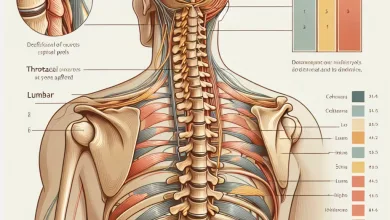Top 8 Tips for Managing Cerebral Palsy Symptoms Effectively

Table of Contents
Understanding Cerebral Palsy: A Brief Overview
Living with Cerebral Palsy (CP) presents numerous daily challenges that can be daunting to manage. However, with the right strategies and mindset, individuals with CP can lead fulfilling and independent lives. This guide provides comprehensive and practical tips for effectively managing cerebral palsy symptoms.
Cerebral Palsy Management: Taking Charge of Your Day-to-Day
Cerebral Palsy (CP) is a group of neurological disorders that affect movement, muscle coordination, and posture. It can present a range of challenges, but with the right approach, individuals with CP can live rich and fulfilling lives. This blog post dives into CP management, offering practical tips to conquer daily obstacles and maximize independence.
Understanding Daily Challenges with Cerebral Palsy
People with CP face various hurdles depending on the severity of their condition. Common challenges include:
- Mobility issues: Difficulty walking, climbing stairs, or maintaining balance.
- Muscle stiffness (spasticity): Tight muscles that can make movement painful.
- Speech and communication difficulties: Trouble speaking clearly or using assistive devices.
- Cognitive challenges: Difficulty with learning, memory, or problem-solving.
These challenges can make everyday tasks like dressing, preparing meals, or participating in social activities challenging. However, with the right Cerebral Palsy tips and support systems in place, these obstacles can be overcome.
Setting Realistic Goals
One of the fundamental aspects of Cerebral Palsy Management is setting realistic goals. Establishing achievable milestones helps avoid frustration and fosters a sense of accomplishment. For instance, starting with small, manageable tasks and gradually increasing complexity can make goals more attainable.
Staying Active with Cerebral Palsy Exercise
Regular Cerebral Palsy Exercise is vital for maintaining muscle strength, flexibility, and overall health. Activities like swimming, cycling, yoga, and strength training are beneficial. Always consult a healthcare provider before starting any new exercise regimen to ensure it is safe.
Practicing Self-Care for Cerebral Palsy
Self-care for Cerebral Palsy is essential for managing both physical and emotional well-being. Simple practices like adequate sleep, a balanced diet, and regular relaxation can significantly impact quality of life. Meditation and spending time in nature can also offer substantial emotional benefits.
Seeking Cerebral Palsy Support
Building a solid support network is indispensable. Cerebral Palsy Support can come from family, friends, healthcare providers, and support groups. These connections provide emotional backing and practical assistance, making daily life more manageable.
Exploring Cerebral Palsy Therapies
Various Cerebral Palsy Therapies can help manage symptoms and improve quality of life. These include:
- Physical Therapy: Focuses on improving movement and mobility.
- Occupational Therapy: Helps with daily tasks and enhances independence.
- Speech Therapy: Assists with communication difficulties.
Community Involvement for Disabled Individuals
Engaging in community activities can significantly enhance social well-being. Community Involvement for Disabled Individuals includes joining adaptive sports programs, art classes, and social groups. These activities offer opportunities for socialization, skill development, and fun.
Adaptive Sports for Cerebral Palsy
Adaptive Sports for Cerebral Palsy provide a fantastic way to stay active and engaged. Sports like wheelchair basketball, swimming, and adaptive skiing are tailored to meet the needs of individuals with CP, promoting physical health and camaraderie.
Enhancing Communication with Cerebral Palsy Communication Devices
Effective communication is vital for independence. Cerebral Palsy Communication Devices, such as speech-generating devices and communication apps, can substantially improve interaction with others.
Advocating for Yourself: Cerebral Palsy Advocacy
Self-advocacy is crucial for ensuring that your needs are met. Cerebral Palsy Advocacy involves communicating your requirements to healthcare providers, employers, and community members. Knowing your rights and standing up for them is essential for achieving Cerebral Palsy Independence.
Managing Emotional and Mental Health
Living with CP can be emotionally challenging. Emotional Support for Cerebral Palsy includes counselling and therapy, which can help address issues like self-esteem, depression, and anxiety. Maintaining Cerebral Palsy and Mental Health is as important as managing physical symptoms.
Accessing Cerebral Palsy Resources
Numerous cerebral Palsy Resources are available to provide information, support, and assistance. Organizations and online platforms offer valuable insights into managing CP and connecting with others in similar situations.
Embracing a Healthy Lifestyle
Maintaining a Cerebral Palsy and Healthy Lifestyle involves a balanced diet, regular exercise, and avoiding harmful habits. A healthy lifestyle can prevent secondary health issues and improve overall well-being.
Pros and Cons of Assistive Devices
| Pros | Cons |
| Enhances mobility | Can be expensive |
| Increases independence | Requires maintenance |
| Reduces risk of injury | May need training to use |
Top Tips for Managing Cerebral Palsy Symptoms Effectively
Here are some key strategies for effective Cerebral Palsy management:
- Embrace Assistive Devices for Cerebral Palsy:
- Mobility aids: Canes, walkers, wheelchairs, or braces can significantly improve mobility and independence.
- Communication devices: Speech-generating devices or picture boards can help individuals express themselves clearly.
- Adaptive equipment: Utensils with built-up handles, tub grab bars, or dressing aids can make daily tasks easier.
- Prioritize Self-Care for Cerebral Palsy:
- Regular exercise: Cerebral Palsy programs can improve muscle strength, flexibility, and coordination.
- Healthy diet: Eating nutritious foods provides essential energy and promotes overall health.
- Adequate sleep: Rest allows the body to repair itself and improves focus and concentration.
- Stress management: Techniques like meditation or yoga can help manage stress and improve emotional well-being.
- Seek Support and Build a Cerebral Palsy Support Network:
- Cerebral Palsy Therapy: Occupational, physical, and speech therapy can equip individuals with valuable skills for daily living.
- Support groups: Connecting with others who understand the challenges of CP can provide emotional support and valuable advice.
- Family and friends: A robust support system of loved ones is crucial for emotional well-being and practical assistance.
- Explore Community Involvement for Disabled Individuals:
- Social activities: Participating in clubs, volunteering, or attending events fosters social connections and combats isolation.
- Adaptive sports: Programs like wheelchair basketball or swimming offer exercise, competition, and teamwork opportunities.
- Become a Cerebral Palsy Advocate:
- Cerebral Palsy awareness: Educating others about CP helps break down barriers and promote inclusivity.
- Fighting for disability rights: Advocating for accessible spaces, transportation, and employment opportunities is crucial.
- Prioritize Mental and Emotional Health:
- Cerebral Palsy and mental health: Living with a chronic condition can take a toll on mental well-being. Don’t hesitate to seek professional help for anxiety or depression.
- Embrace a Healthy Lifestyle:
- Cerebral Palsy and healthy lifestyle: Healthy habits like regular exercise, a balanced diet, and enough sleep are essential for managing symptoms and promoting overall well-being.
- Utilize Cerebral Palsy Resources:
- Cerebral Palsy organizations: Numerous organizations offer support, resources, and information on managing CP.
Building Independence with Cerebral Palsy Management
By implementing these Cerebral Palsy management strategies, individuals with CP can take charge of their daily lives and achieve greater independence. Remember, you are not alone on this journey. There are many resources and support systems available to help you thrive.
FAQs about Managing Cerebral Palsy Symptoms
- What is the cause of Cerebral Palsy?
CP is caused by damage to the developing brain, often before or during birth.
- Is there a cure for Cerebral Palsy?
CP has no cure, but management strategies can significantly improve symptoms and quality of life.
- Can adults develop Cerebral Palsy?
No, CP is a developmental condition, meaning it affects individuals from birth. However, symptoms may worsen or change over time.
- What are the best exercises for individuals with CP?
Swimming, cycling, and yoga are excellent for maintaining muscle strength and flexibility.
- How can I find a suitable assistive device?
Consult a healthcare provider for personalized recommendations based on your needs and condition.
- What are the benefits of joining community activities?
They offer socialization, skill development, and emotional support, helping to combat isolation and improve quality of life.
- How can I advocate for my needs effectively?
Know your rights and communicate your needs clearly to healthcare providers, employers, and community members.
- What types of therapies are available for Cerebral Palsy?
Various therapies include physical therapy, occupational therapy, and speech therapy, each aimed at improving specific aspects of daily living and independence.
- How can I manage stress and emotional well-being with CP?
Techniques like meditation, yoga, and regular counselling can help manage stress and improve emotional well-being.
- What resources are available for individuals with CP?
Numerous organizations and online platforms provide support, information, and assistance, helping individuals manage CP and connect with others in similar situations.
Conclusion
Managing cerebral palsy requires a multifaceted approach that includes setting realistic goals, utilizing assistive devices, staying active, practising self-care, seeking support, engaging in community activities, and advocating for yourself. By effectively incorporating these Top Tips for Managing Cerebral Palsy Symptoms, individuals with CP can navigate their daily challenges and lead fulfilling, independent lives.
We would love to hear about your experiences and any additional strategies you use in managing cerebral palsy. Please share your thoughts, questions, and personal stories in the comments below. Your insights can provide valuable support and encouragement to others in the community. Thank you for reading!



